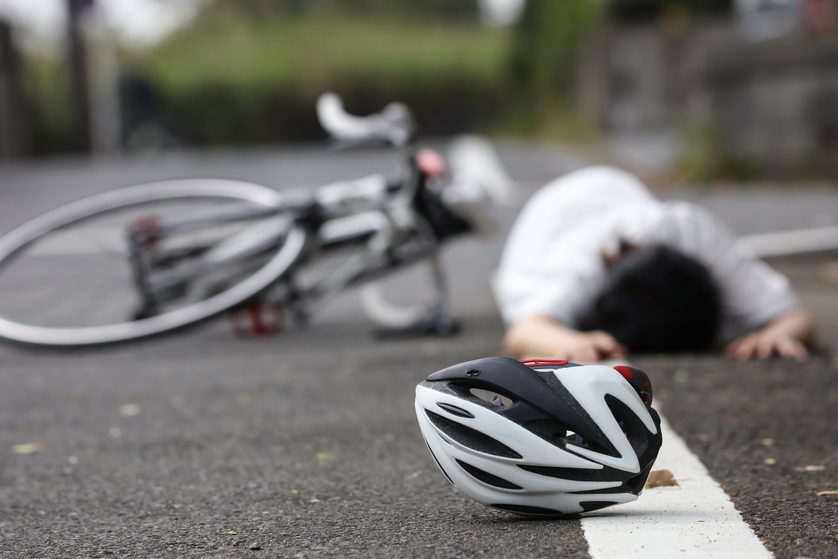
Being charged with a hit-and-run in Los Angeles can be an overwhelming experience, especially if the incident wasn’t intentional. California law requires drivers involved in an accident to stop, exchange information, and provide aid if necessary. Failure to do so can result in serious consequences, even when the driver did not intend to flee the scene.
For those accused of a hit-and-run, understanding how to defend against these charges is critical. This guide will explain what constitutes a hit-and-run, common scenarios where intent may not be clear, and the steps to take to build a strong defense with the help of an experienced hit and run defense lawyer.
What Is a Hit-and-Run in California?
Under California Vehicle Code §20002 VC, a hit-and-run occurs when a driver leaves the scene of an accident without providing identifying information or rendering aid. Hit-and-runs can involve property damage (misdemeanor) or injury or death (felony). Both carry significant penalties, including fines, license suspension, and potential jail time.
Key Elements of a Hit-and-Run:
- Accident Involvement: The driver was involved in a collision that caused damage or injury.
- Failure to Stop: The driver did not remain at the scene to exchange information or assist others.
- Intent to Flee: The prosecution must prove the driver knowingly left the scene without fulfilling legal obligations.
Proving intent is often the most contested element, especially in cases where the driver may not have been aware of the accident.
Common Scenarios of Unintentional Hit-and-Runs
Not all hit-and-run cases involve deliberate attempts to flee responsibility. Several scenarios can lead to unintentional violations of California�’s hit-and-run laws:
Unawareness of Collision:
Drivers may genuinely not realize they were involved in an accident, particularly in low-impact collisions or when driving larger vehicles like trucks or SUVs.
- Example: A driver reversing in a crowded Los Angeles parking lot brushes another vehicle but doesn’t notice the minor contact and drives away.
Fear or Panic:
Some individuals may leave the scene out of fear or confusion, especially if they are unfamiliar with the law or worried about their safety in an unsafe area.
Belief That No Damage Occurred:
Drivers might assume there was no need to stop if they believe no damage or injury resulted from the accident.
- Example: A cyclist swerves into a moving car, but the driver sees the cyclist get up and continue on their way, leading the driver to believe stopping isn’t necessary.
Understanding these nuances can help your hit and run defense lawyer craft a compelling argument for your case.
Proving Your Side of the Story
If you’re charged with a hit-and-run, proving that the incident was unintentional is key to reducing or dismissing charges. Building a strong defense involves gathering evidence, understanding your rights, and working with a knowledgeable criminal defense lawyer.
Steps to Strengthen Your Defense:
- Document Your Account: Write down everything you remember about the incident, including your actions and state of mind.
- Collect Evidence: Photos, dashcam footage, and witness statements can corroborate your version of events.
- Review the Scene: Visit the accident location with your lawyer to identify factors that may support your defense, such as poor visibility or confusing signage.
- Challenge Prosecution Claims: Your lawyer can contest evidence that suggests intent to flee, such as inconsistent witness testimony or ambiguous video footage.
A skilled lawyer will use these tools to establish reasonable doubt, showing that you lacked the intent to commit a hit-and-run.
How California Law Treats Hit-and-Run Offenses
California law takes hit-and-run charges seriously, with penalties varying based on the severity of the incident. Understanding the legal landscape is crucial for developing an effective defense.
Misdemeanor Hit-and-Run (Property Damage):
- Penalties: Up to six months in jail, a $1,000 fine, and restitution for damages.
- Example: Leaving the scene after denting another car in a parking lot.
Felony Hit-and-Run (Injury or Death):
- Penalties: Up to four years in prison, fines up to $10,000, and additional restitution.
- Example: Failing to stop after a collision that causes serious injury to a pedestrian.
Civil Liability:
In addition to criminal charges, hit-and-run drivers may face civil lawsuits from victims seeking compensation for damages or injuries.
California’s laws also include a "Good Samaritan" provision, encouraging drivers to stop and provide aid without fearing immediate arrest for unrelated violations, such as minor traffic offenses.
Recent Updates to Hit-and-Run Laws in California (2025)
As of 2025, new legislation in California addresses several aspects of hit-and-run cases, including:
- Restorative Justice Programs: Eligible first-time offenders may have the option to participate in victim restitution programs instead of facing jail time.
- Increased Use of Technology: Police are leveraging more advanced surveillance, such as AI-enabled traffic cameras, to identify hit-and-run suspects.
- Expanded Good Samaritan Protections: Drivers stopping to assist after an accident now receive broader immunity from unrelated charges, encouraging compliance with hit-and-run laws.
These changes reflect California’s efforts to balance accountability with rehabilitation.
Unique Example: Unintentional Hit-and-Run Defense
Imagine that a Los Angeles rideshare driver unknowingly grazes a parked car while pulling over to pick up a passenger. The driver continues the trip, unaware of the contact. Hours later, law enforcement identifies the vehicle using license plate recognition technology and charges the driver with a hit-and-run. By presenting evidence that the driver’s focus was on locating their passenger and that the impact was imperceptible, a hit and run defense lawyer could potentially argue for reduced charges and enrollment in a restorative justice program.
Why You Need a Hit and Run Defense Lawyer
Defending against a hit-and-run charge without legal representation is risky. An experienced hit and run defense lawyer understands the nuances of California law and can help you navigate the complexities of your case.
How a Lawyer Can Help:
- Evaluate Evidence: Review police reports, witness accounts, and surveillance footage for inconsistencies or exculpatory details.
- Challenge Prosecutorial Claims: Contest evidence that fails to prove intent or misinterprets your actions.
- Negotiate Alternatives: Advocate for reduced charges, alternative sentencing, or participation in restorative justice programs.
- Represent You in Court: Provide a strong defense during hearings or trial proceedings.
Steps to Take if Charged with a Hit-and-Run
If you’ve been accused of a hit-and-run in Los Angeles, taking the following steps can protect your rights and strengthen your defense:
- Consult a Lawyer Immediately: Early legal representation is crucial for building a strong defense.
- Avoid Speaking to Police Without a Lawyer: Anything you say can be used against you.
- Document Your Version of Events: Preserve as much detail as possible about what happened.
- Gather Supporting Evidence: Photos, dashcam footage, and witness contact information can be invaluable.
Facing Hit-and-Run Charges in Los Angeles? Call The Law Offices of Christopher Chaney Today for Aggressive Defense
If you’re facing hit-and-run charges in Los Angeles, don’t navigate the legal system alone. At the Law Offices of Christopher Chaney, we are experienced in hit and run defense, helping clients in Los Angeles, Century City and Encino protect their rights and build a compelling case. With a deep understanding of California law and extensive experience, we’re here to help you tell your side of the story.
Your defense starts here. Contact us today at 818-330-5198 to protect your future and fight for the best possible outcome.
Disclaimer: This blog is intended for informational purposes only and does not establish an attorney-client relationship. It should not be considered as legal advice. For personalized legal assistance, please consult our team directly.





